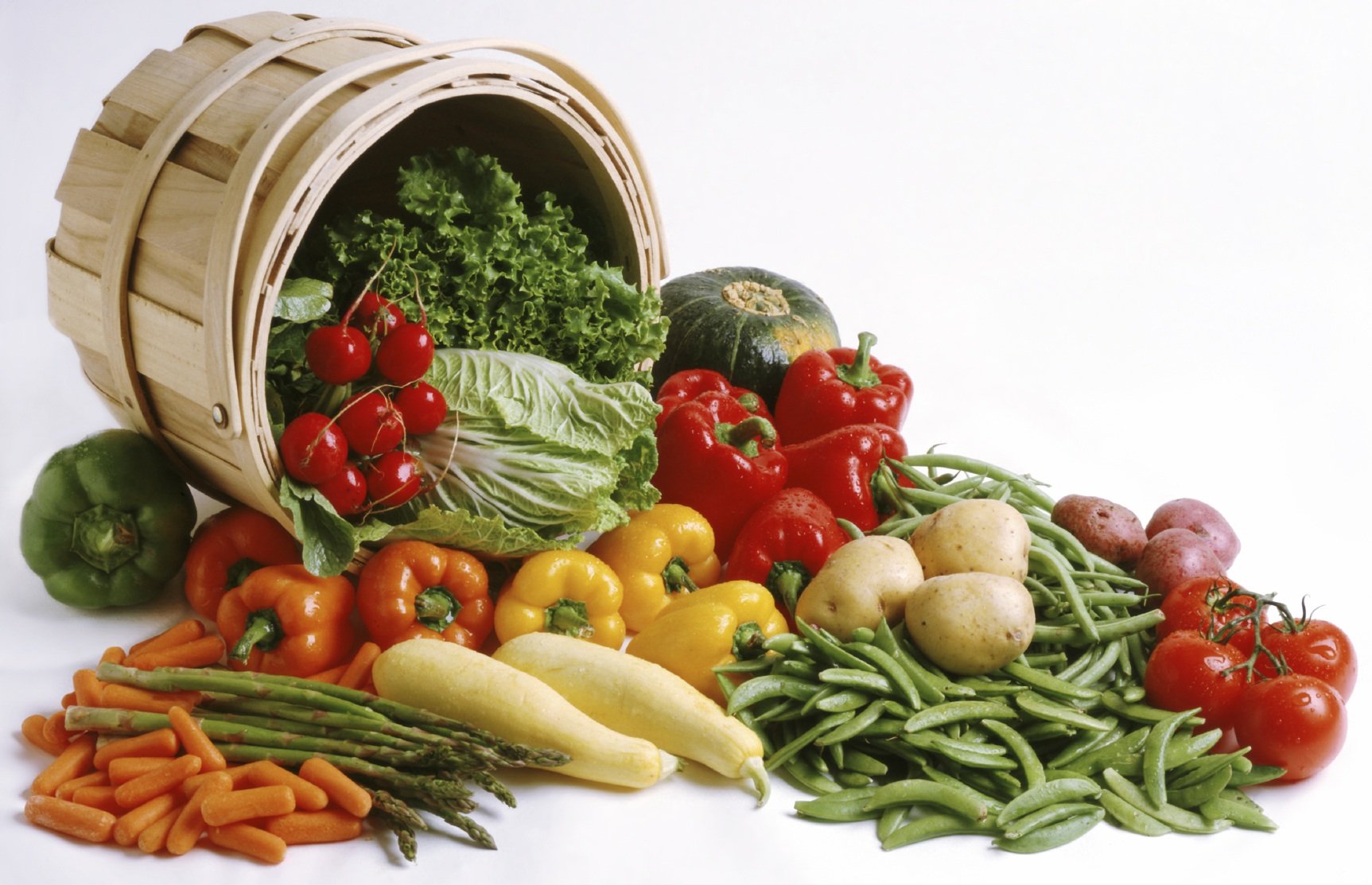
Vegetables Big Culprit in Food Illness
Lettuce and other leafy vegetables are healthy for you, but they are also the largest source of food-borne contamination in the U.S., according to a new government report.
About 2.2 million people get sick annually from eating contaminated leafy vegetables. That represents about 23% of the 9.6 million cases of food-borne illness each year, a study released Tuesday by the Centers for Disease Control and Prevention shows.Produce foods, a category that includes vegetables, fruits and nuts, sicken 4.4 million people a year, according to the report. Although that is a greater number than the 2.1 million illnesses caused by contaminated beef, pork, poultry and other meat, the pathogens found on meat are generally more deadly than those found on vegetables, according to the report. The study analyzed food-borne disease outbreaks for 11 years from 1998 through 2008 to calculate an annual rate.
Contaminated poultry is particularly deadly, accounting for 19% of food-related deaths, the CDC said.
One death and more than 130 illnesses were linked to a salmonella outbreak caused by contaminated ground turkey in 2011. Cargill Inc. recalled 36 million pounds of ground turkey on Aug. 3, 2011, in response to the outbreak.
That outbreak and others prompted the U.S. Department of Agriculture to announce a plan in December to increase testing for salmonella at poultry processing plants.
Contaminated produce can also be deadly. A listeria outbreak in cantaloupes killed 33 people in 2011.
Most food-related illnesses cause relatively minor discomfort and go unreported. The CDC study relied on scientific methods to extrapolate total illnesses from disease outbreaks that were reported and monitored, said Patricia Griffin, chief of the Enteric Diseases Epidemiology Branch at the CDC and one of the authors of the new study.
Contamination on farms and in processing facilities from bacteria such as salmonella, E. coli and listeria are often behind the large food recalls, but often food contamination takes place in home and restaurant kitchens, said Dr. Griffin. Illnesses can be greatly reduced, she said, if food preparers take simple precautions such as washing their hands often and keeping raw meat separate from fruits and vegetables. The meat may be cooked, killing any bacteria on it, but if the germs were first spread to another food that isn’t cooked, people can get sick.
The norovirus is the most common food contaminant that makes people sick, with symptoms including diarrhea, vomiting and nausea. Its presence in food is most frequently due to preparers not washing their hands before cooking, Dr. Griffin said.
The CDC performed the study to help the Food and Drug Administration and the USDA, the two main government agencies responsible for regulating food safety, to focus their efforts on preventing food contamination, Dr. Griffin said.
An FDA spokeswoman said the CDC report will help the agency as it targets specific foods for disease prevention. The findings provide “foundation for priority setting for food-safety interventions, policy development, research, and analyses,” the spokeswoman said.
Earlier in January, the FDA unveiled new rule proposals covering all aspects of growing and harvesting produce to try to prevent fruit and vegetables from becoming contaminated with deadly bacteria.
The consumer may not be able to control whether or not they are purchasing contaminated food but once that food gets to the kitchen there are several steps to take to decrease the chances of that contamination turning into foodborne illness. These steps can be summarized into 4 categories: clean, separate, cook, chill.
1. Clean.
- Wash hands frequently—for 20 seconds with soap and running water.
- Be sure to scrub the backs of your hands, between your fingers, and under your nails. Bacteria can hide out here too!
- When to wash hands: before eating food; before, during, and after preparing food; before and after treating a cut or wound; before and after caring for someone who is sick; after handling uncooked eggs, or raw meat, poultry, seafood, or their juices; after blowing your nose, coughing, or sneezing; after touching an animal or animal waste; after touching garbage; after using the toilet.
- Wash kitchen surfaces and utensils after each use: bacteria can be spread throughout the kitchen and get onto cutting boards, utensils, and countertops.
- Wash fruits and veggies—but not meat, poultry, or eggs! Did you know that—even if you plan to peel fruits and veggies—it’s important to wash them first because bacteria can spread from the outside to the inside as you cut or peel them? Washing raw meat and poultry can actually help bacteria spread, because their juices may splash onto (and contaminate!) your sink and countertops.
2. Separate.
- Use separate cutting boards and plates for produce and for meat, poultry, seafood, and eggs. Placing ready-to-eat food on a surface that held raw meat, poultry, seafood, or eggs can spread bacteria and make you sick.
- Use one cutting board for fresh produce, and one for raw meat, poultry, or seafood. Use separate plates and utensils for cooked and raw foods.
- Once a cutting board gets excessively worn or develops hard-to-clean grooves, consider replacing it.
- Keep meat, poultry, seafood, and eggs separate from all other foods at the grocery.
- Keep meat, poultry, seafood, and eggs separate from all other foods in the fridge. Never place raw meat/poultry/fish above fresh produce (ex. vegetables) in the fridge because the juice from the raw meat can drip onto the fresh produce.
3. Cook.
- Use a food thermometer. Cooked food is safe only after it’s been heated to a high enough temperature to kill harmful bacteria. Refer to foodsafety.gov for safe minimum cooking temperatureshttps://www.foodsafety.gov/keep/charts/mintemp.html
- Keep hot foods hot and cold foods cold. The possibility of bacterial growth actually increases as food cools after cooking because the drop in temperature allows bacteria to thrive (and vice versa if cold foods increase in temperature, ex. potato salad sitting out at a picnic on a hot summer day). Hot foods should be held above 140˚ Fahrenheit and cold foods should be kept below 40˚.
- Microwave food thoroughly (to 165 ˚F). To make sure harmful bacteria have been killed in your foods, it’s important to microwave them to 165˚ or higher.
4. Chill.
- Refrigerate perishable foods within two hours..Cold temperatures slow the growth of illness causing bacteria
- Make sure your fridge and freezer are cooled to the right temperature. Your fridge should be between 40 ˚F and 32 ˚F, and your freezer should be 0 ˚F or below.
- Never thaw or marinate foods on the counter. Bacteria can multiply rapidly at room temperature, thawing or marinating foods on the counter is one of the riskiest things you can do when preparing food for your family.
- Know when to throw food out. You can’t tell just by looking or smelling whether harmful bacteria has started growing in your leftovers or refrigerated foods. Refer to foodsafety.gov for appropriate storage times for refigeration and freezing: https://www.foodsafety.gov/keep/charts/storagetimes.html
- At Heal n Cure, our physicians and registered dietitian educate patients on how to buy the best quality foods. We assist patients in following the latest food safety recommendations so that they can safely nourish themselves and their families.


